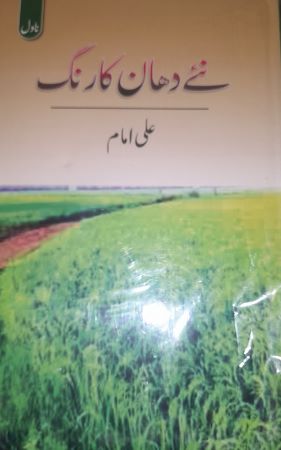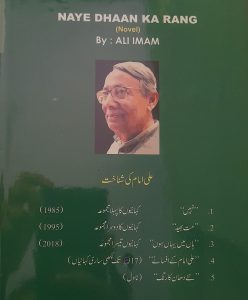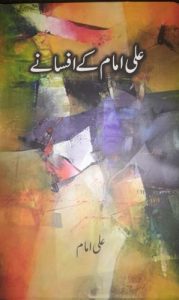
The novel portrays that the ‘co-operation’ and ‘negotiations’ constitute the real social fabric even in a communally charged and caste-conflict ridden contemporary rural India
By Prof. Neshat Quaiser
Urdu short story writer Ali Imam has recently come out with his first novel entitled ‘Naye Dhaan Ka Rang’. Critics would judge its literary value, however, the novel deserves attention for it is not only not afflicted with liquefying emotionalism that besets most Urdu fiction explicitly or as pivotal undercurrent but also has brought rural locale to the center of Urdu fiction which has predominantly for long been urban middle class centric.
 The novel, set in a rural locale in the Indian province of Bihar, opens up avenues to reflect afresh on the much talked about commonly shared syncretic and other composite social spaces in everyday life in contemporary India faced with communalization of social life even in towns and villages. And this is done without really foregrounding communal divide as a primary concern of the novel.
The novel, set in a rural locale in the Indian province of Bihar, opens up avenues to reflect afresh on the much talked about commonly shared syncretic and other composite social spaces in everyday life in contemporary India faced with communalization of social life even in towns and villages. And this is done without really foregrounding communal divide as a primary concern of the novel.
Everyday social life in the novel is chronicled through interpersonal social interaction across religious and caste belongingness reflected in neighborhood relations, family life, marriage ceremonies, religious festivals such as Holi, sports, times of sickness, village welfare activities, implementation of government policies, implications of everyday rural language in forming interpersonal and larger social relations etc. with minute details, with co-operations and negotiations between Hindus and Muslims and among different castes as the constitutive elements of social fabric. Elements of Sufi Islam in the making of this social fabric is also brought in. Thus, instead of the caste-based antagonistic predispositions and conflicts within both Hindus and Muslims, the novel depicts ‘co-operation’ within the patron-client system.
The novel intends to portray that the ‘co-operation’ and ‘negotiations’ constitute the real social fabric even in a communally charged and caste-conflict ridden contemporary rural India. Is this a hope in desperation? If so, what is its vantage point?

About the Author
Ali Imam, is a short story writer born in a remote village Masiya of Bind Block, Nalanda, Bihar, India on 20/12/1947. Presently, he resides at Patna. He graduated with science and then studied sociology and educations, and then completed PhD in social science. He is working as teacher, teacher educator as well as administrator. He started writing in Urdu. His first short story emerged in 1967. He contributed more than 1000 short stories depicting the theme of love for life. Individualism is his key symbolism and abstract art his narrative. He uses imagery with deeper meaning and rebel from formula.
 Published work
Published work
1-Nahin (1985) a short story collection
2-Matbhed (1985) a short story collection
3-Haan Mai Yaha Hoon (2018) a short story collection
4-Ali Imam Ke Afsaney (2018) collection of all published short stories
5-Naye Dhaan Ka Rang (2023) Novel
______________